Note
Click here to download the full example code
Temperature Data¶
# sphinx_gallery_thumbnail_number = 4
# Import project package
import gdc19
import pyvista
import PVGeo
import omf
import omfvista
import pandas as pd
import numpy as np
Temperature Probe Data¶
# Load the temperature data
_temp = pd.read_csv(
gdc19.get_temperature_path('well_based_temperature.csv')
)
_temp.head()
temperature = omf.PointSetElement(
name='temperature',
description='cumulative record of one-dimensional temperature modeling '\
'based off of well data. Temperature log data were exampled and '\
'extrapolated below the bottom of a number of wells. Temperatures '\
'are in degrees Celsius, and all location data are georeferenced to '
'UTM, zone 12N, NAD 83, NAVD 88.',
subtype='point',
geometry=omf.PointSetGeometry(
vertices=_temp[['x', 'y', 'z']].values
),
data=[omf.ScalarData(
name='temperature (C)',
array=_temp['T'].values,
location='vertices'
),]
)
temperature.validate()
temp = omfvista.wrap(temperature)
temp.plot()
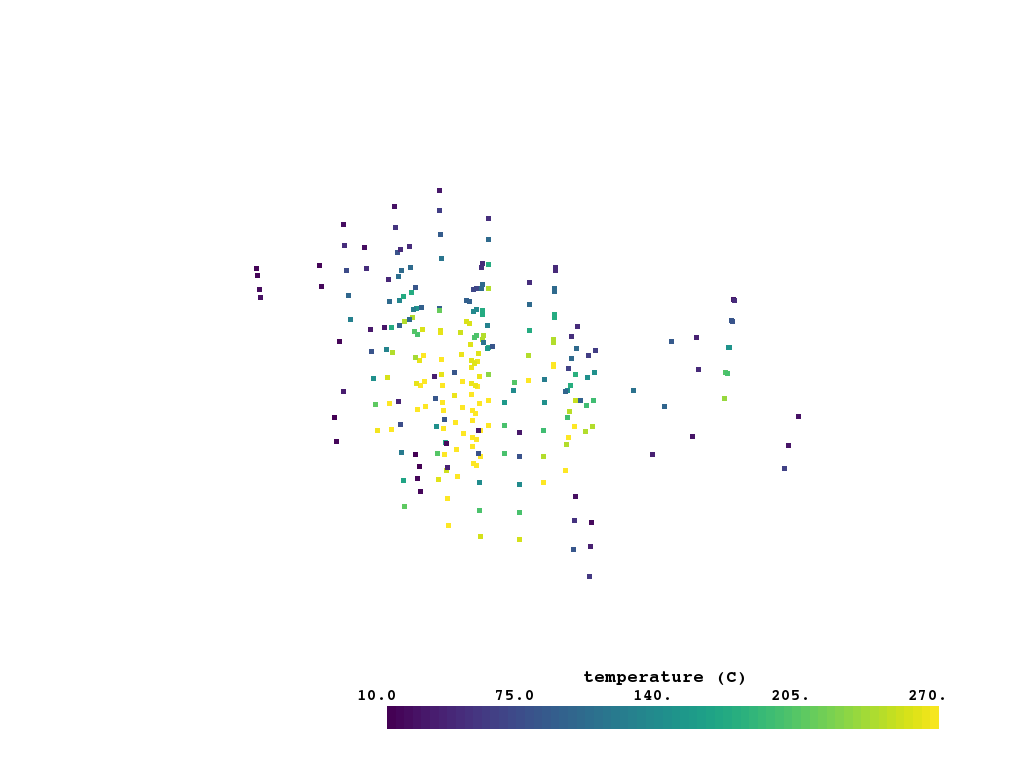
Geostatistical Model¶
Prep temperature data for kriging in SGeMS
# First, load the topography surface that was previously aggregated:
surfaces = omfvista.load_project(gdc19.get_project_path('surfaces.omf'))
topo = surfaces['land_surface']
p = pyvista.Plotter()
p.add_mesh(temp, cmap='coolwarm', point_size=10,
render_points_as_spheres=True, stitle='Temperature')
p.add_mesh(topo)
p.camera_position = [1,1,-1]
p.show()
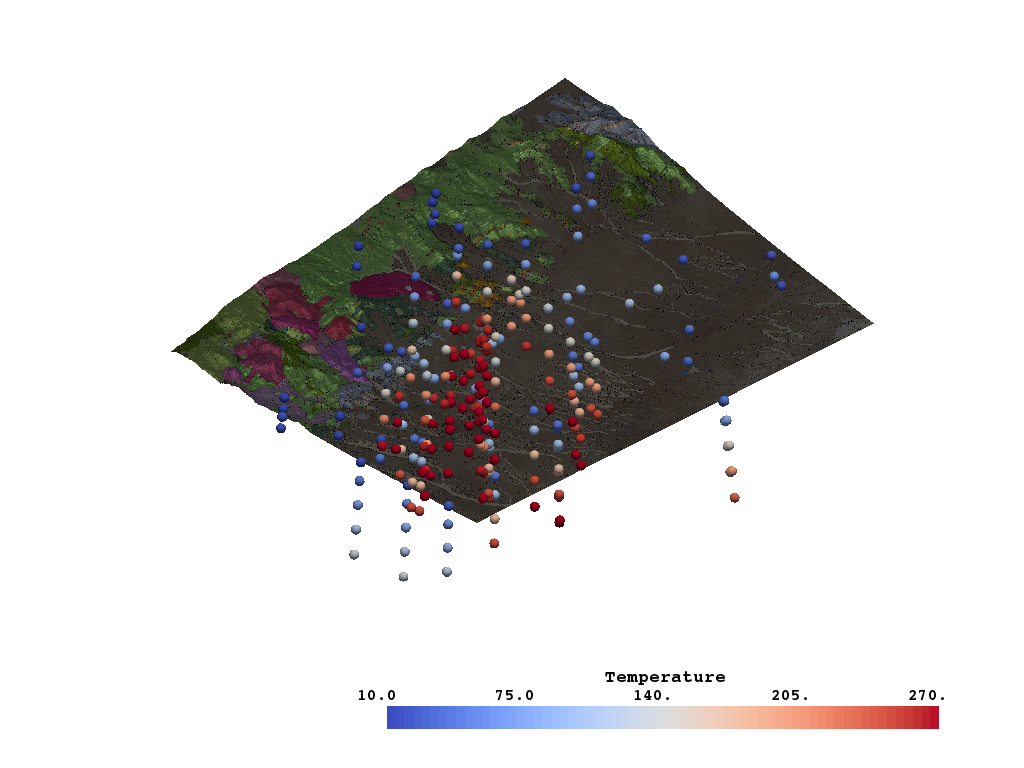
Make tables of the temperature and topography data
# Make pandas data frame of the temps
df_temp = pd.DataFrame(data=np.c_[temp.points, temp.point_arrays['temperature (C)']],
columns=['x', 'y', 'z', 'temp_c'])
df_temp.header = 'temperature (degrees C)'
print(df_temp.head())
Out:
x y z temp_c
0 339385.01 4264212.99 1680.6 150.0
1 339385.01 4264212.99 880.6 195.0
2 339385.01 4264212.99 -119.4 195.0
3 337709.02 4260660.00 1596.3 250.0
4 337709.02 4260660.00 796.3 262.0
# And of the topography surface
df_topo = pd.DataFrame(data=topo.points, columns=['x','y','z'])
df_topo.header = 'Land Surface'
print(df_topo.head())
Out:
x y z
0 329924.988160 4.270951e+06 1493.691650
1 329924.988160 4.270926e+06 1493.996460
2 329949.993331 4.270926e+06 1493.786011
3 329949.993331 4.270951e+06 1493.691650
4 329974.998501 4.270926e+06 1493.790039
Save these tabular data frames to GSLib formatted files for use in SGeMS
gdc19.save_gslib(gdc19.get_krig_path('temperature.gslib'), df_temp)
gdc19.save_gslib(gdc19.get_krig_path('topography.gslib'), df_topo)
Load the kriged temperature model from SGeMS
fkrig = gdc19.get_krig_path("Geotherm_kriged_0.sgems")
fvar = gdc19.get_krig_path("Geotherm_kriged_0_krig_var.sgems")
# Read the kirgged model and variance
grid = PVGeo.gslib.SGeMSGridReader().apply(fkrig)
grid_var = PVGeo.gslib.SGeMSGridReader().apply(fvar)
# Label the array appropriately
grid.rename_scalar('Getherm_kriged_0', 'Temperature')
grid.cell_arrays['Temperature_var'] = grid_var.cell_arrays['Getherm_kriged_0_krig_var']
Set the spatial reference of the grid Values from SGeMS:
grid.origin = (325000, 4.245e6, -2700)
grid.spacing = (250, 250, 50)
grid.plot(cmap='coolwarm')
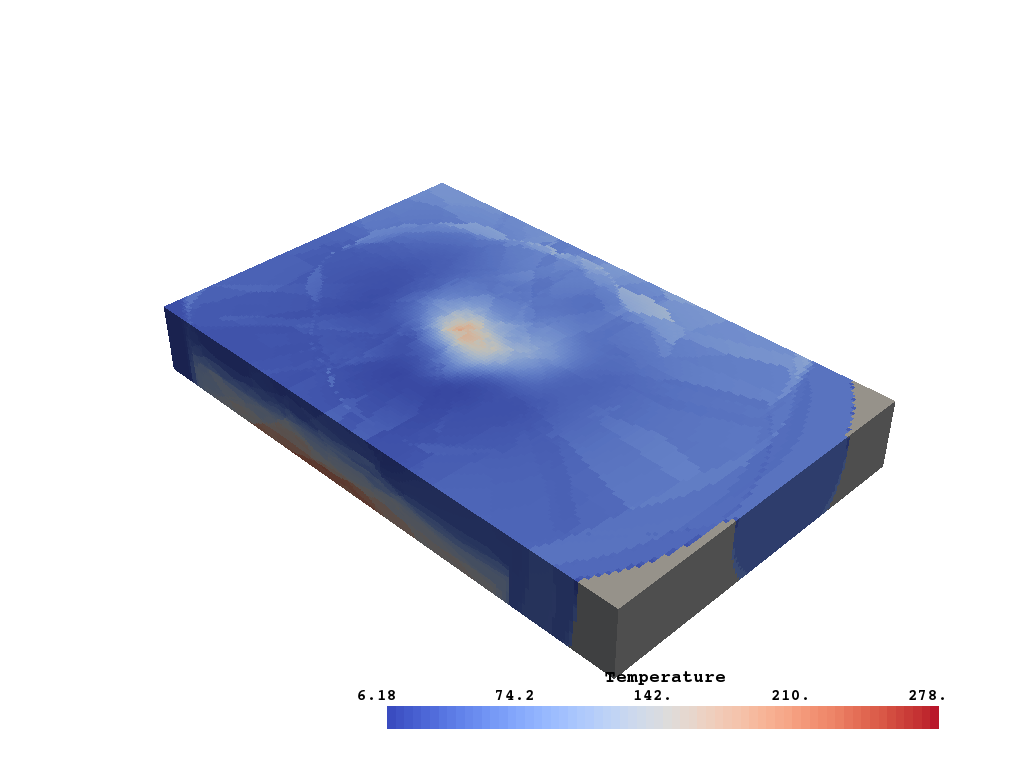
Lets quickly inspect the model
bounds = gdc19.get_roi_bounds()
clipped = grid.clip_box(bounds, invert=False)
contours = clipped.cell_data_to_point_data().contour()
contours.plot(cmap='coolwarm', clim=clipped.get_data_range())
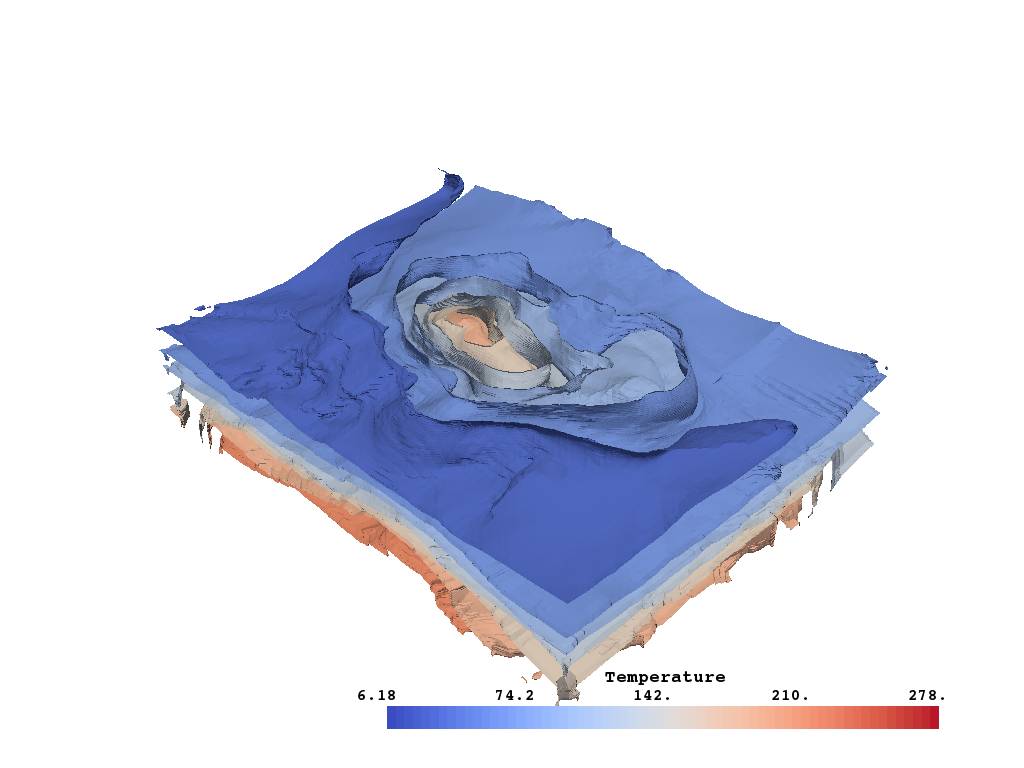
Now we need to convert the model to the OMF files specification
# MINUS ONE BECASE WE DEFINE CELL DATA
ncx, ncy, ncz = np.array(grid.dimensions) - 1
sx, sy, sz = grid.spacing
temp_model = omf.VolumeElement(
name='kriged_temperature_model',
description='kriged temoerature model built from temperature probe data',
geometry=omf.VolumeGridGeometry(
tensor_u=np.full(ncx, sx),
tensor_v=np.full(ncy, sy),
tensor_w=np.full(ncz, sz),
origin=grid.origin,
),
data=[omf.ScalarData(
name='temperature (C)',
array=grid.cell_arrays['Temperature'].reshape((ncz,ncy,ncx), order='F').ravel(),
location='cells'),
omf.ScalarData(
name='Temperature_var',
array=grid.cell_arrays['Temperature_var'].reshape((ncz,ncy,ncx), order='F').ravel(),
location='cells'),
],
)
temp_model.validate()
And one final sanity check
omfvista.wrap(temp_model).clip_box(gdc19.get_roi_bounds(), invert=False).plot(cmap='coolwarm')
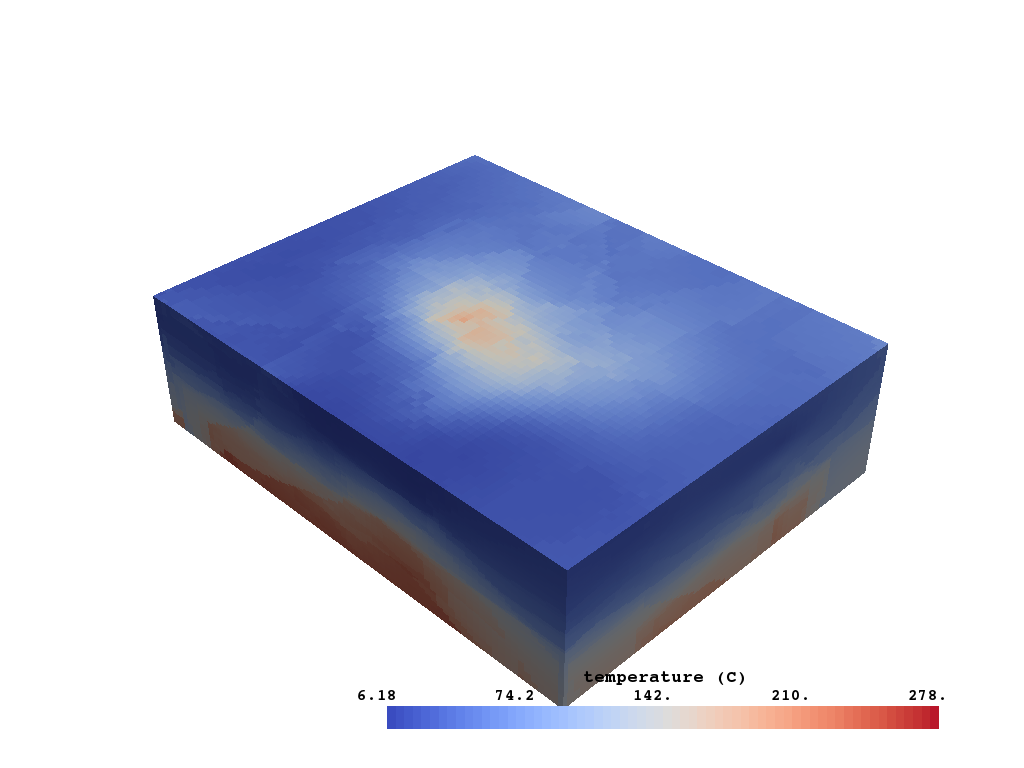
Write the data¶
proj = omf.Project(
name='FORGE Temperature Data',
description='All temperature data/models for the 2019 FORGE Geothermal Student Competition '
)
proj.elements = [ temperature, temp_model]
proj.validate()
Save the temperature project file
omf.OMFWriter(proj, gdc19.get_project_path('temperature.omf'))
Total running time of the script: ( 0 minutes 44.880 seconds)